Wandering the narrow streets of Alberobello, I found myself surrounded by clusters of whitewashed stone houses with pointy, cone-shaped roofs.
Trulli houses in southern Italy stand out for their unique engineering—locals build each one using interlocking stones, skipping mortar entirely, which makes them both practical and beautiful.
I listened to locals share stories and legends tied to these quirky homes.
Here, folklore and history mix; some folks talk about farmers outsmarting tax collectors, while others believe the stone cones keep evil away.
Fact and legend blur together, and every stroll among the trulli feels a little magical.
If you’re after something different, exploring the trulli gives you a peek into a world shaped by clever building and deep tradition.
Italy’s wonders aren’t just in its big cities or ruins—sometimes, they hide in the quiet charm of a stone village.
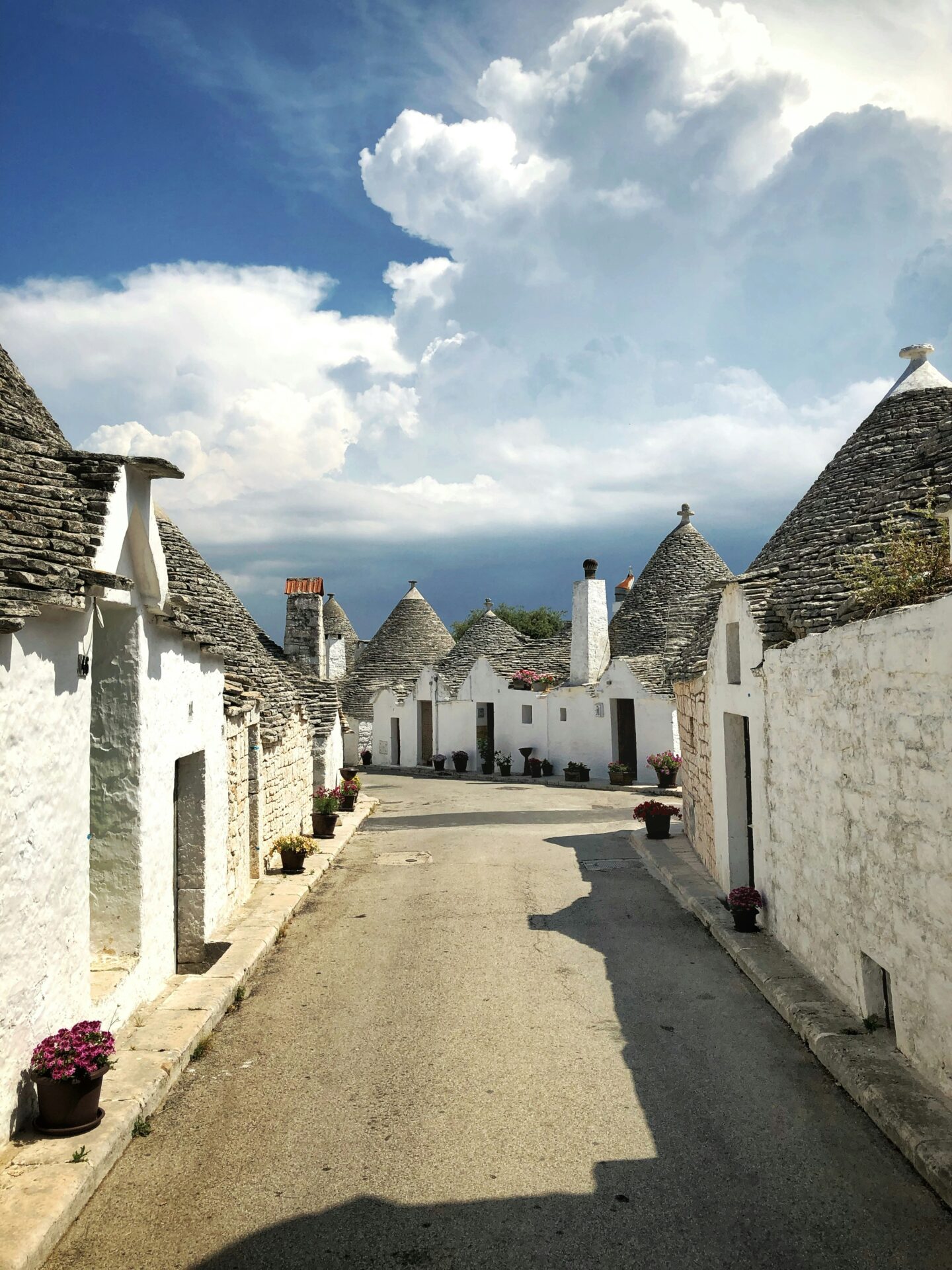
Origins and Cultural Significance of Trulli
The first time I visited Puglia, those whitewashed stone homes with their odd cone roofs really caught my eye.
They aren’t just eye candy; their design, history, and symbolism are woven into southern Italy’s identity.
Trulli blend inventive engineering with centuries of tradition, earning them a spot on the world stage.
Historical Roots in Southern Italy
Trulli first popped up in the 16th century in Puglia, a region famous for farmland and olive trees.
Local laws and taxes pushed people to get creative.
Residents built these homes without mortar so they could take them apart quickly if tax inspectors showed up.
It was a clever way to dodge expensive property taxes, especially in rural towns like Alberobello.
As I walked through Alberobello, I noticed how tightly the trulli cluster together.
Builders use local limestone, stacking it carefully to create thick walls and those signature cone roofs.
This dry-stone method keeps homes cool during hot summers and warm when winters are mild.
Using local materials and smart design, people shaped the Italian landscape to fit their needs.
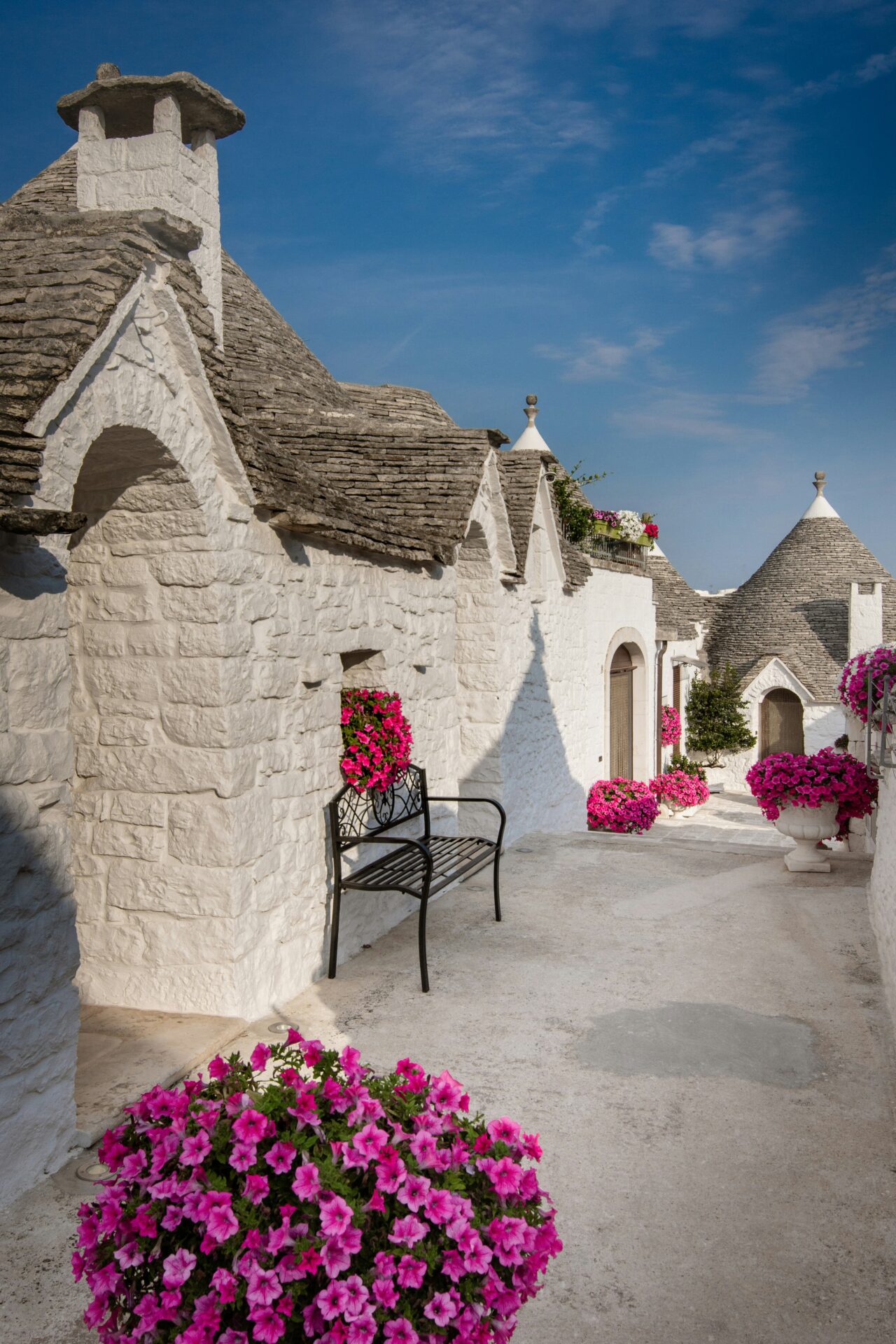
Symbolism and Folklore Tied to Trulli
Stories about trulli go way beyond their practical roots.
Locals share tales about the origins of these homes, mixing legend and reality.
Some folks say the odd roofs keep evil spirits away, while others believe painted symbols bring luck or chase off bad vibes.
On my visits, I spotted crosses, hearts, and even sun shapes painted or carved into some roofs.
These marks aren’t just for show—they add an air of mystery and meaning to each trullo.
The conical roofs might trace back to Messapian culture, which came before the Romans.
Friends in Puglia told me trulli once played a role in rituals and beliefs about the land’s fertility.
Inside and out, the designs tie tradition to survival and protection.
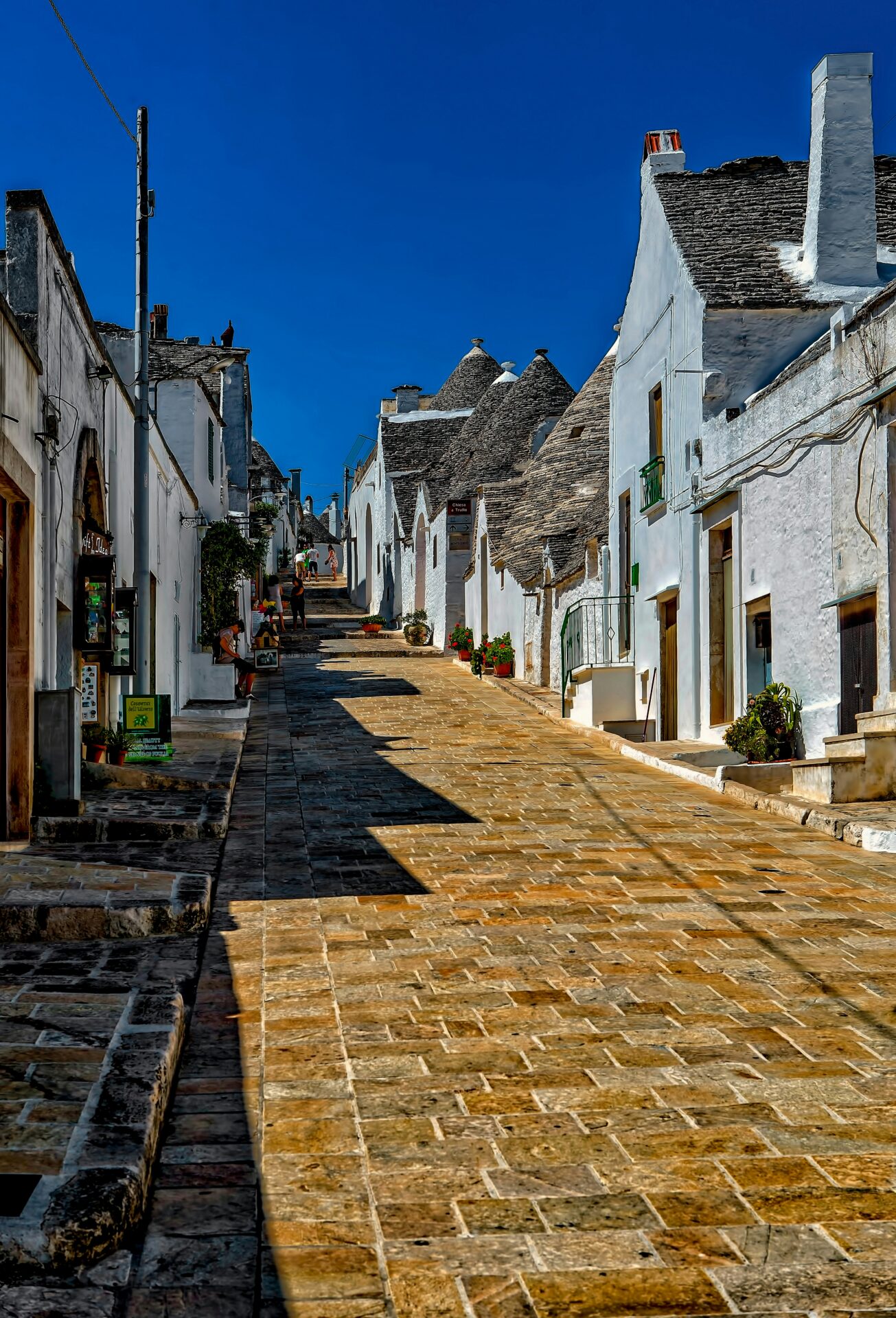
Trulli and UNESCO World Heritage Sites
UNESCO named Alberobello’s trulli a World Heritage Site in 1996, and honestly, it makes sense.
Trulli aren’t just old houses; they’re living museums where architecture fits perfectly with the land and culture.
People have worked hard to preserve them, so visitors like me can get a real sense of what life was like centuries ago.
UNESCO’s recognition means there are ongoing efforts to protect the trulli for future generations.
If you visit, try staying in a trullo guesthouse or take a guided tour.
These experiences support local families and let you dive into Italy’s unique architectural traditions.
Alberobello’s trulli really are a highlight among Italy’s World Heritage sites.
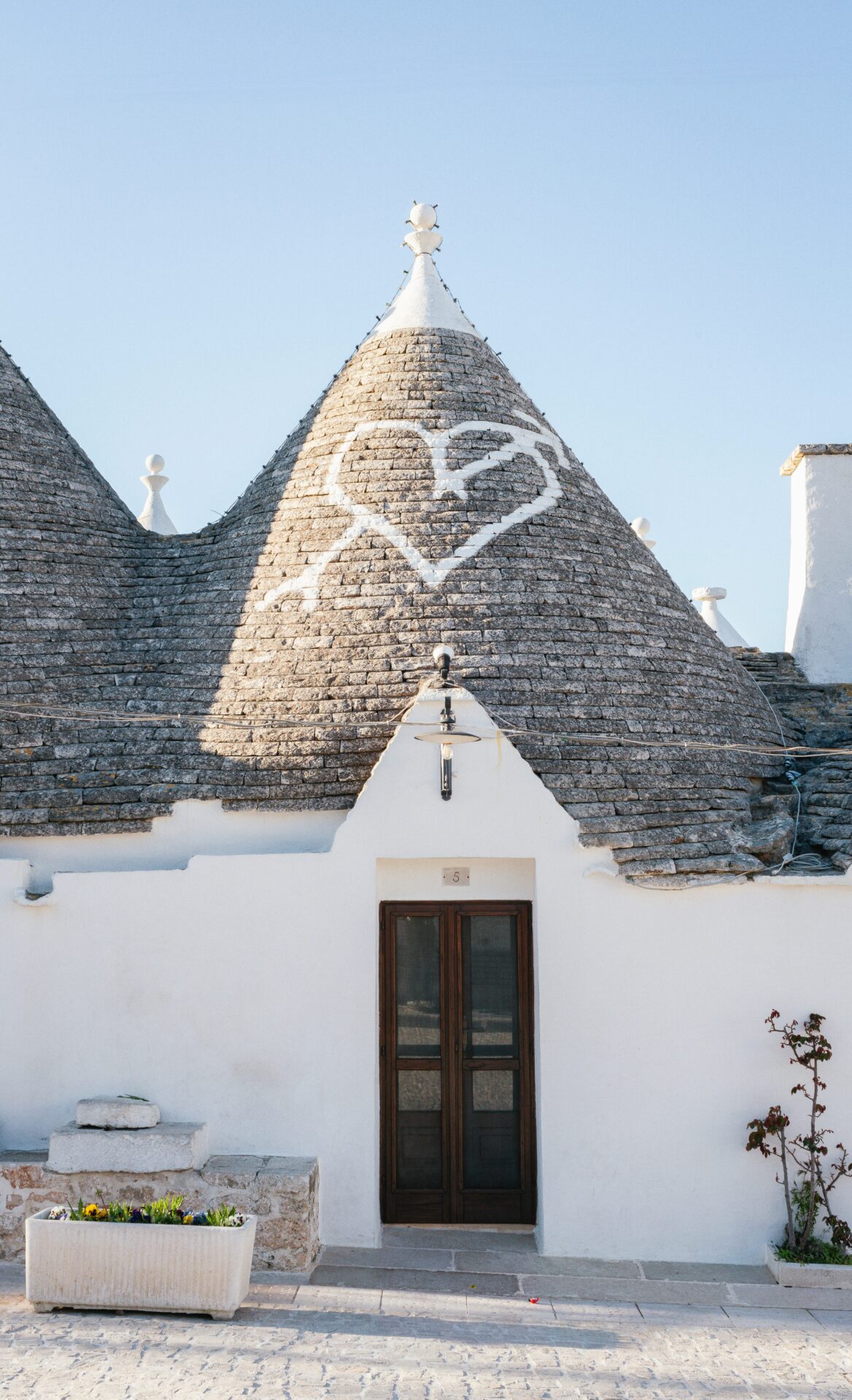
Architectural Marvels: The Engineering Behind Trulli
When I first landed in Alberobello, I was genuinely impressed by how these ancient homes still stand strong.
The trulli’s odd shapes, old-school building methods, and smart use of local stone all left me in awe.
Construction Techniques and Materials
Right away, the dry stone construction stood out.
Builders use limestone, which is everywhere in Apulia.
Instead of mortar, they stack each stone by hand, fitting them together like a puzzle.
The walls are thick—about a meter wide—which makes the homes feel solid and helps insulate them.
Masons shape every rock using simple tools, making sure each fits just right and the walls don’t shift.
Watching a local fix a wall, I could see the skill passed down through generations.
Here’s a quick look at the main building techniques and materials:
| Method | Description |
|---|---|
| Dry Stone Stacking | No mortar; limestone bricks locked by pressure |
| Double Walls | Thick, layered walls for strength and insulation |
| Local Limestone | Easily available, weather-resistant stone |
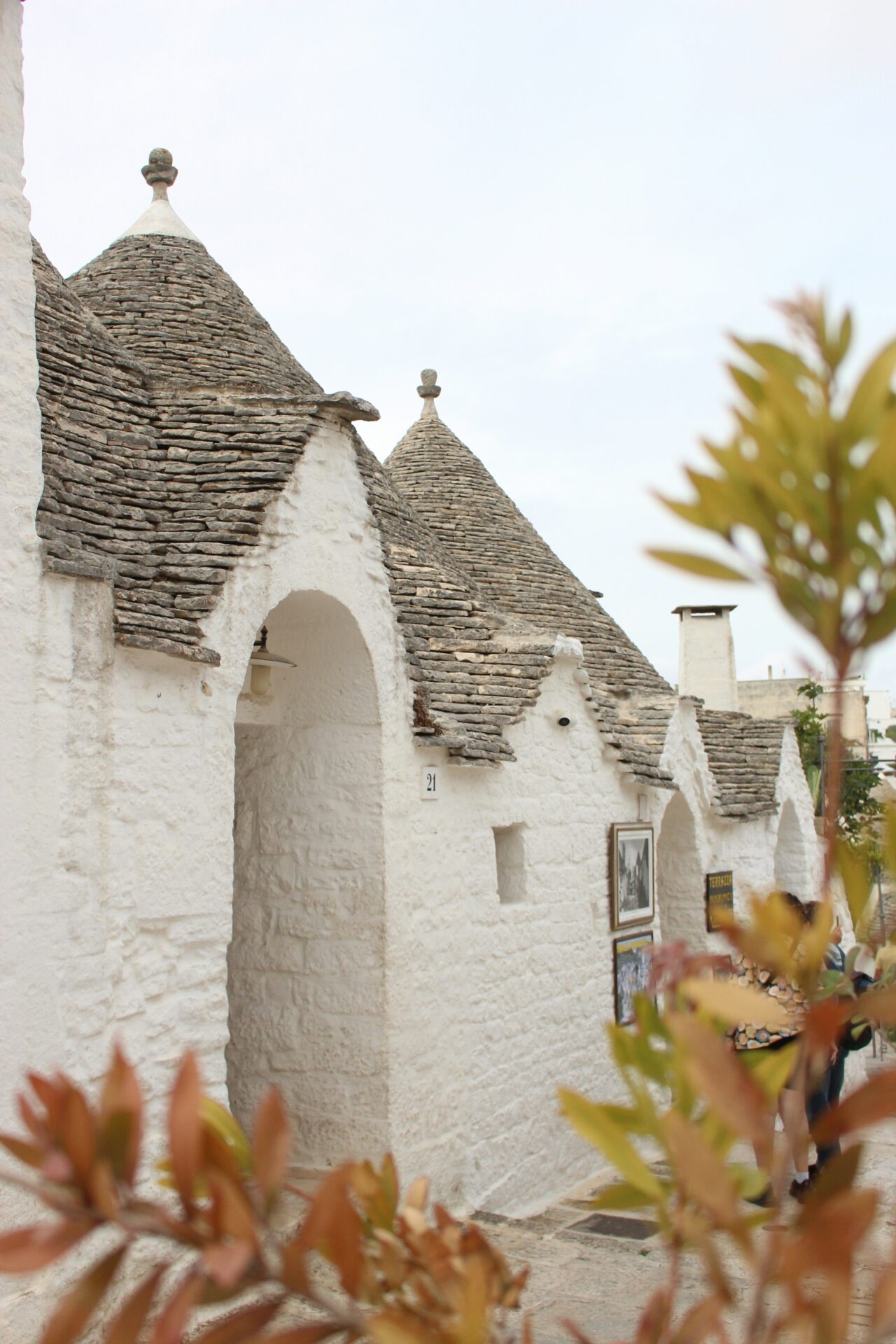
Distinctive Conical Roof Structures
The conical roofs really steal the show.
Each trullo gets a pointed dome made from circular layers of flat limestone called chiancarelle.
No two roofs look exactly alike, so every house has its own personality.
Builders start at the outer wall and spiral the stones upward, tightening the circle as they go.
They top the roof with a decorative stone or symbol—some families still use mysterious ancient signs.
Inside, the cone shape draws your eyes up, making the ceiling feel high even if the space is small.
It’s not just for looks, either.
The roof’s angles let water drain off fast, which matters during those heavy southern rains.
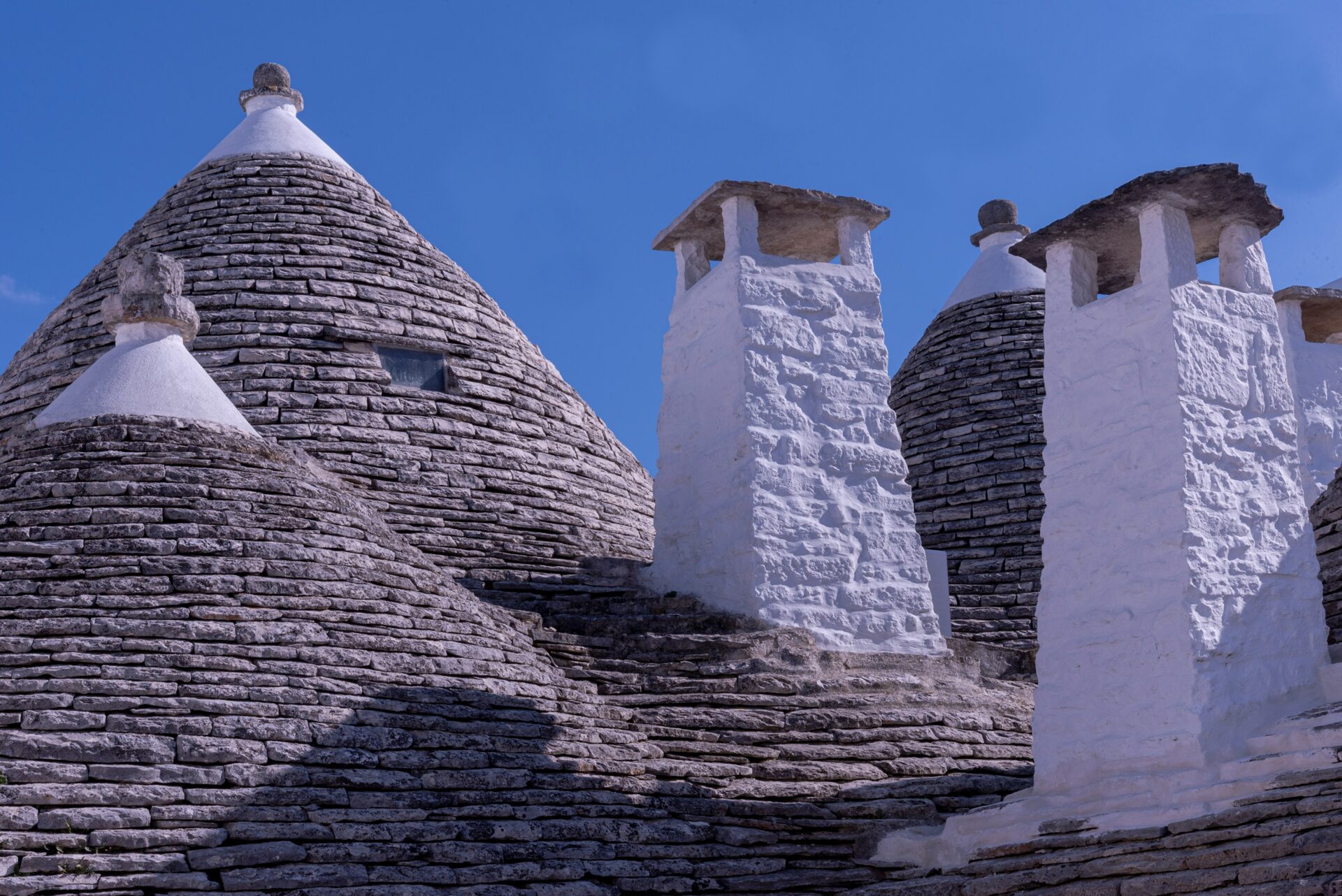
Durability and Climate Adaptations
I remember standing inside a trullo on a blazing summer day and being surprised at how cool it felt.
Those thick, layered walls keep the heat out and the temperature steady.
In winter, they trap warmth, making the space comfortable year-round.
Limestone naturally shrugs off moisture, so leaks and mold don’t stand a chance.
Even after centuries, most trulli I saw barely showed any damage from rain or wind.
You can repair the roofs stone by stone, which makes fixing small issues pretty simple.
The design lets warm air rise, so the upper cone never feels stuffy.
If you get the chance, spend a night in a trullo—you’ll see just how clever this old architecture really is.
It’s a mix of smart design, local materials, and solutions born from centuries of living in Apulia.

Trulli in the Broader Landscape of Italian Architecture
Italy’s architecture always has a few surprises, and trulli are definitely among the most unique.
Their conical shapes and rustic character stand out, especially when you compare them to the grand stone buildings in cities.
Comparing Trulli With Gothic Architecture
Walking through Alberobello, the round trulli feel like they belong to a different world than Italy’s famous Gothic cathedrals.
Gothic architecture—think Florence’s Santa Maria del Fiore or Bologna’s tall towers—loves vertical lines, pointed arches, and dramatic spires.
Trulli, on the other hand, keep things simple and use humble materials.
Where Gothic structures use cut stone, stained glass, and flying buttresses, trulli stick with dry limestone stacked layer by layer.
Trulli feel grounded, almost as if they grew right out of the earth.
Their scale is cozy, not imposing.
The first time I stepped inside a trullo, the space felt cool and welcoming—not vast and echoing like a Gothic church.
Key Differences:
| Feature | Gothic Architecture | Trulli Architecture |
|---|---|---|
| Shape | Tall, pointed, vertical | Short, conical, rounded |
| Materials | Cut stone, glass, marble | Local dry limestone |
| Function | Churches, civic buildings | Rural homes |
| Interior Feel | Grand, open, dramatic | Cozy, intimate, rustic |
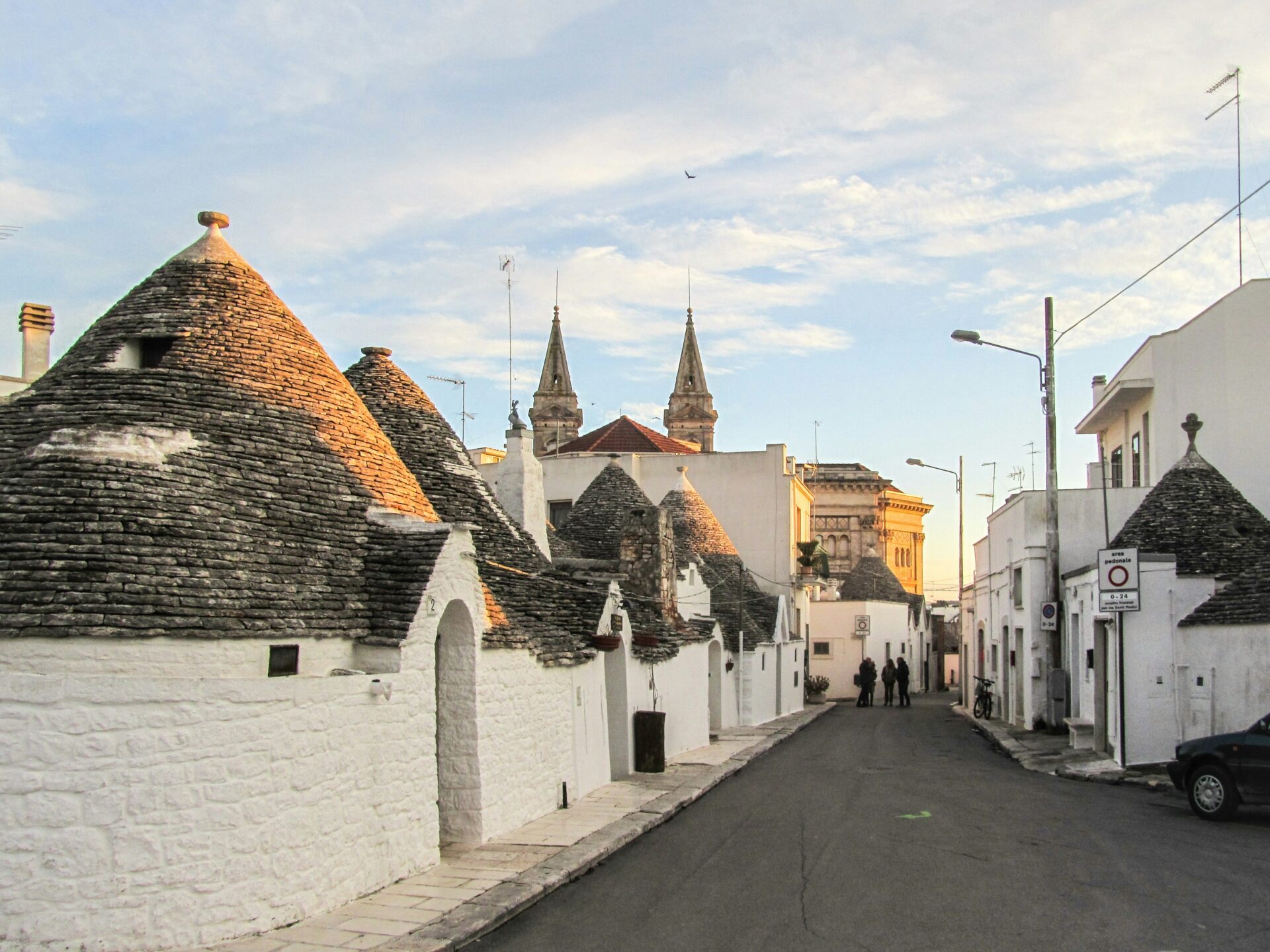
Influences from Nearby Regions and Cities
People sometimes wonder if trulli borrowed ideas from other Italian styles, especially since cities like Florence and Bologna aren’t too far away.
Trulli don’t really share the decorative touches you see in Florentine palaces or Bologna’s red brick towers.
Still, there are subtle connections.
The use of local stone links trulli to farmhouses throughout southern Italy.
Some skills from city masons might have made their way to the countryside, but trulli keep a distinct, practical look.
When I visited Florence, I saw Renaissance flair everywhere—stucco, frescoes, grand courtyards—but nothing like that shows up in Puglia’s trulli villages.
The trulli’s design comes from local needs and materials, not city trends.
Even so, the layered roofs remind me a bit of rural buildings near Bologna, though the shapes are definitely different.
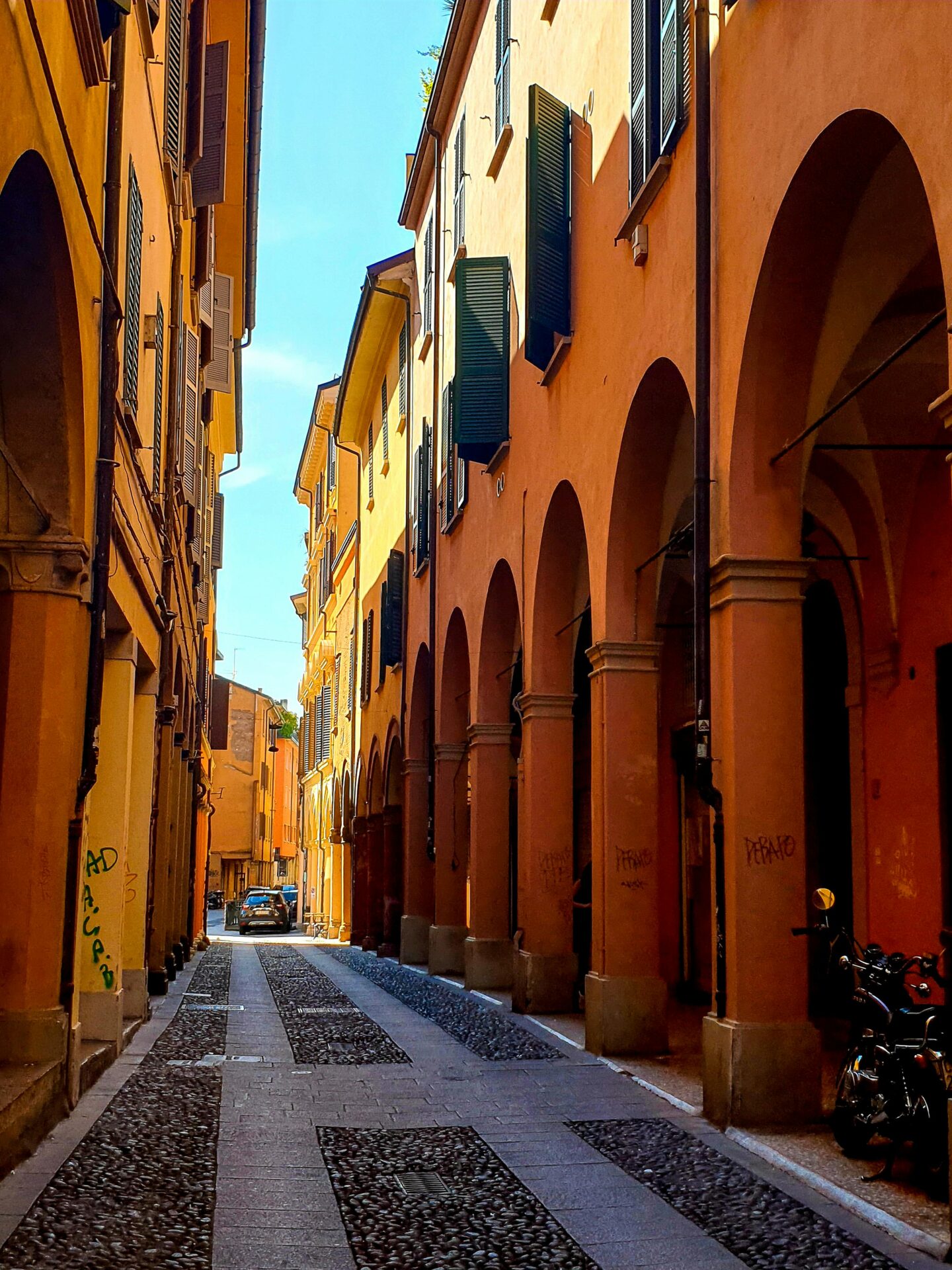
Trulli and the Evolution of Rural Italian Homes
Spending a night in a trullo, I got a taste of how these homes connect to Puglia’s rural past.
Most old Italian houses stick to rectangles and timber roofs, but trulli use circular plans and a self-supporting stone dome.
Farmers built them this way because limestone was everywhere, and the thick stone kept things cool during hot summers.
While rural homes across Italy have modernized, trulli stayed oddly timeless.
Some families now restore and live in them, mixing old construction with modern touches.
Notable Features:
- Thick stone walls for insulation
- Whitewashed exteriors to reflect heat
- Small windows for shade
- Self-supporting roofs, no wood needed
If you love wandering through the Italian countryside and want to see architecture that tells a story of adaptation, trulli villages are a must.
You won’t find this kind of tradition in Florence or Bologna.
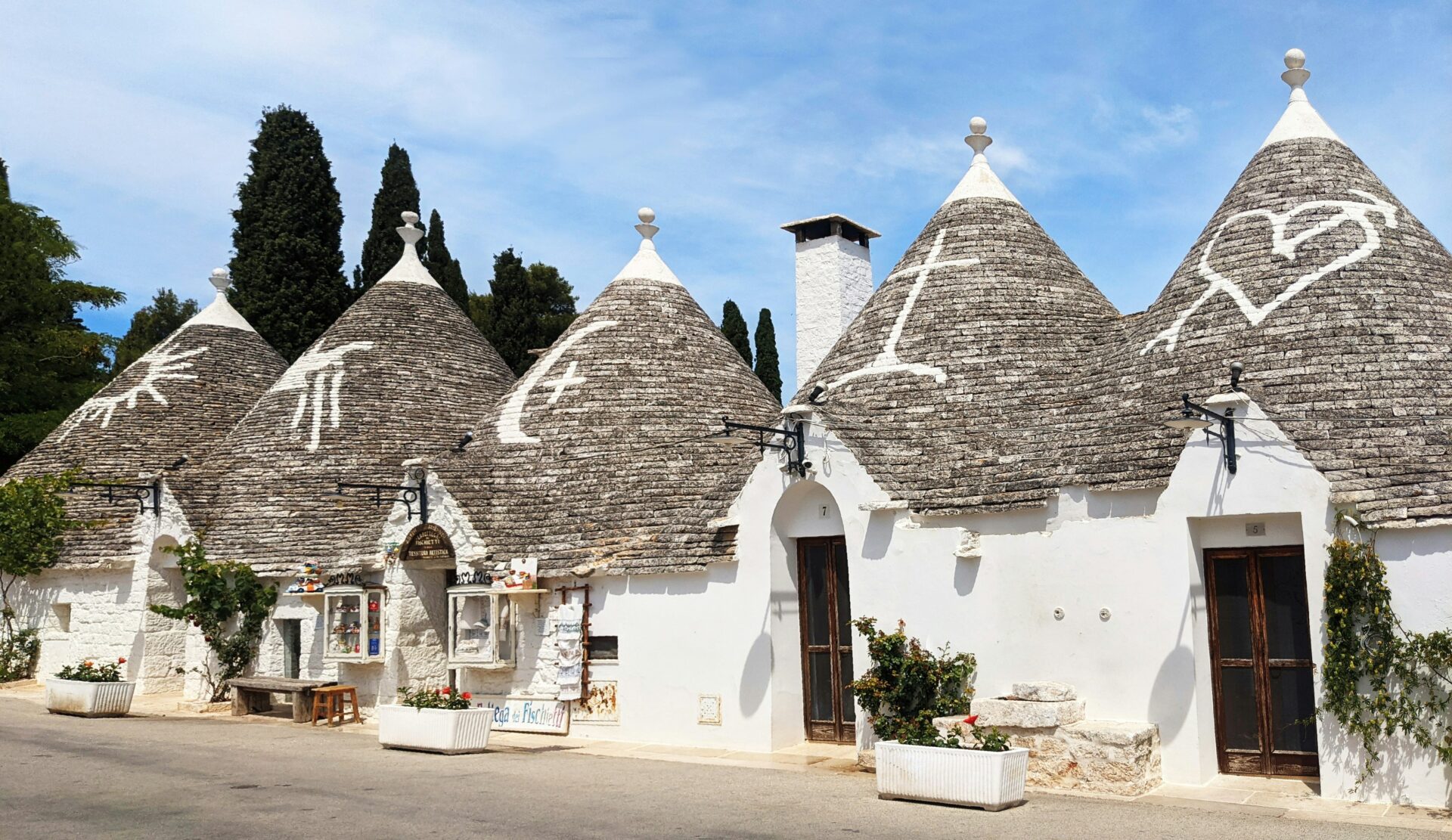
The Folklore and Legends Interwoven With Trulli
The stories tied to trulli run deep in Puglia’s communities.
Mystical origins, old fables, and lively festivals all add an extra layer to every stone.
Mythical Origins and Local Fables
Growing up, I always heard tales about how trulli were built to dodge property taxes.
According to legend, families could quickly pull apart the stone roofs and claim the homes were just temporary shelters when the authorities came around.
This trick supposedly helped peasants avoid taxes from landowners and the Kingdom of Naples.
Another favorite fable among locals talks about magical creatures.
Some believe small spirits or fairies once watched over trulli, keeping evil at bay.
Kids in Alberobello still whisper about mysterious lights dancing on trulli rooftops at night, especially under a full moon.
True or not, these myths add charm to every visit.
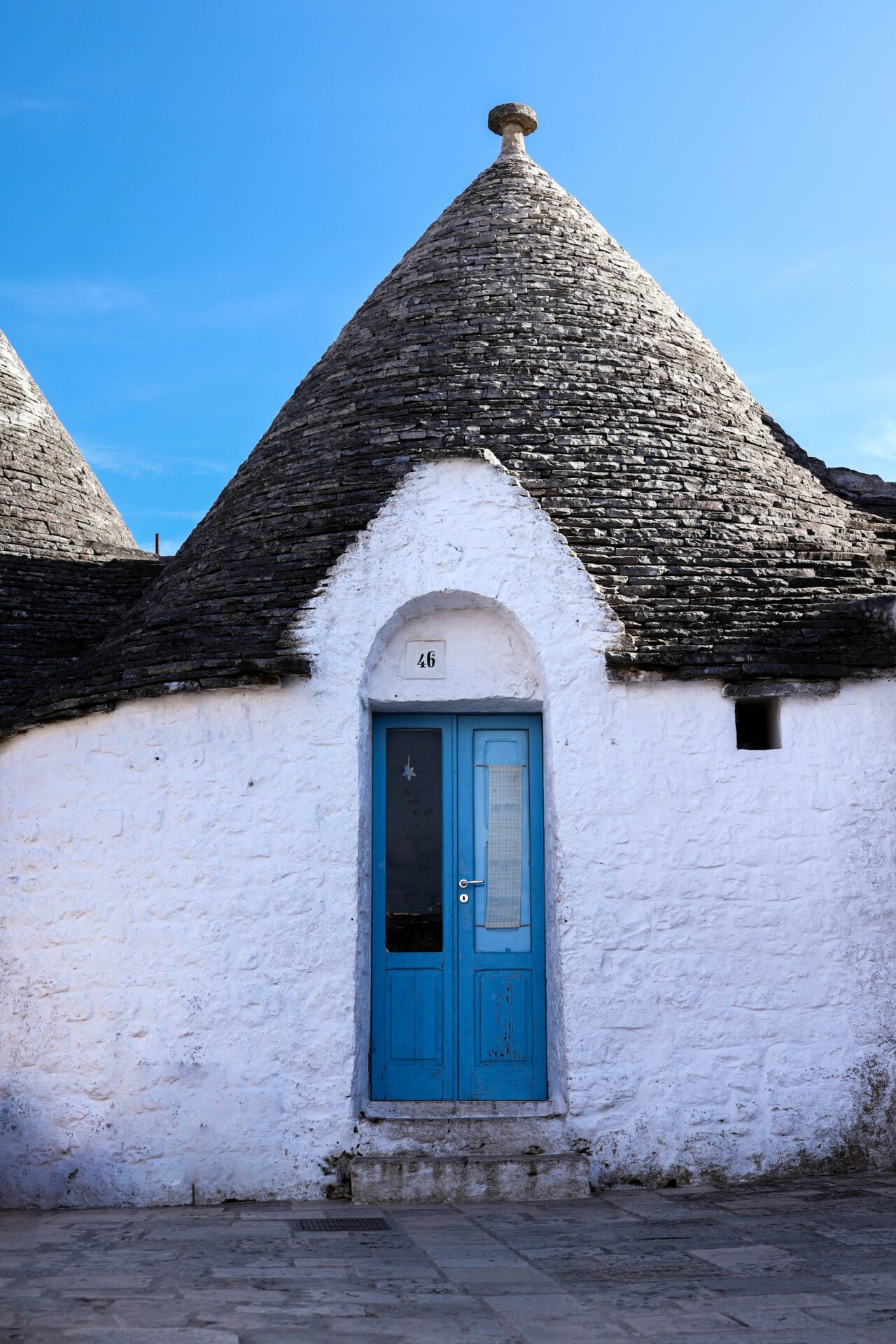
Celebrations and Traditions Around Trulli Homes
During my stay in Alberobello, I joined a summer festival that lights up the main piazza.
Locals decorate their trulli with bright banners and set up tables loaded with traditional foods like orecchiette and taralli.
Folk music and dancing fill the air.
Visitors can jump right in—there are cheese-making demos and craft displays.
Sometimes, residents open their trulli so guests can peek inside and hear family stories.
A few families still paint old symbols in white on the cone roofs, hoping for protection and good luck.
These traditions, rooted in pride and community, keep the legends of trulli alive.
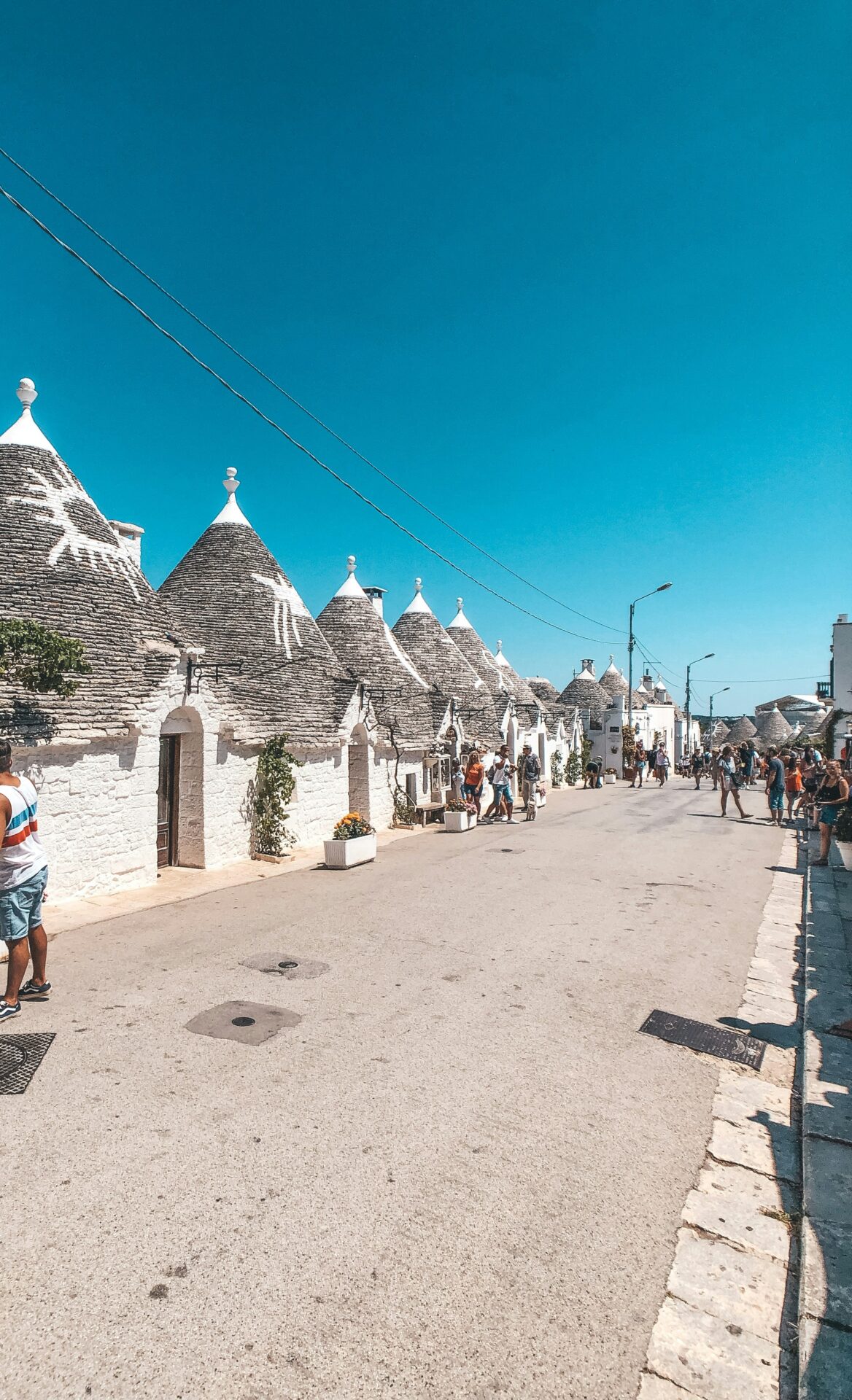
Trulli Today: Sustainable Tourism and Culinary Experiences
Visiting the trulli of southern Italy is more than just admiring their quirky shapes.
Staying in these homes, tasting local food, and joining in on festivals all give you a real taste of Puglia’s traditions.
Staying in a Trullo: Unique Accommodations
My first night in a trullo surprised me—these ancient stone houses mix charm with comfort.
Many trulli have been lovingly restored as eco-friendly places to stay, using the original limestone and sustainable materials.
Thick walls keep rooms cool even on the hottest days, so there’s not much need for air conditioning.
You’ll find some trulli tucked into olive groves or close to Alberobello’s famous clusters.
Some rentals have little kitchens, traditional alcoves, and private gardens.
Sleeping under the stone cone roof felt rustic and peaceful.
Modern touches like Wi-Fi or updated bathrooms don’t take away from the authentic vibe.
If you want a memorable, low-impact stay, renting a trullo gives you privacy and a real sense of local life—without the carbon footprint of a regular hotel.
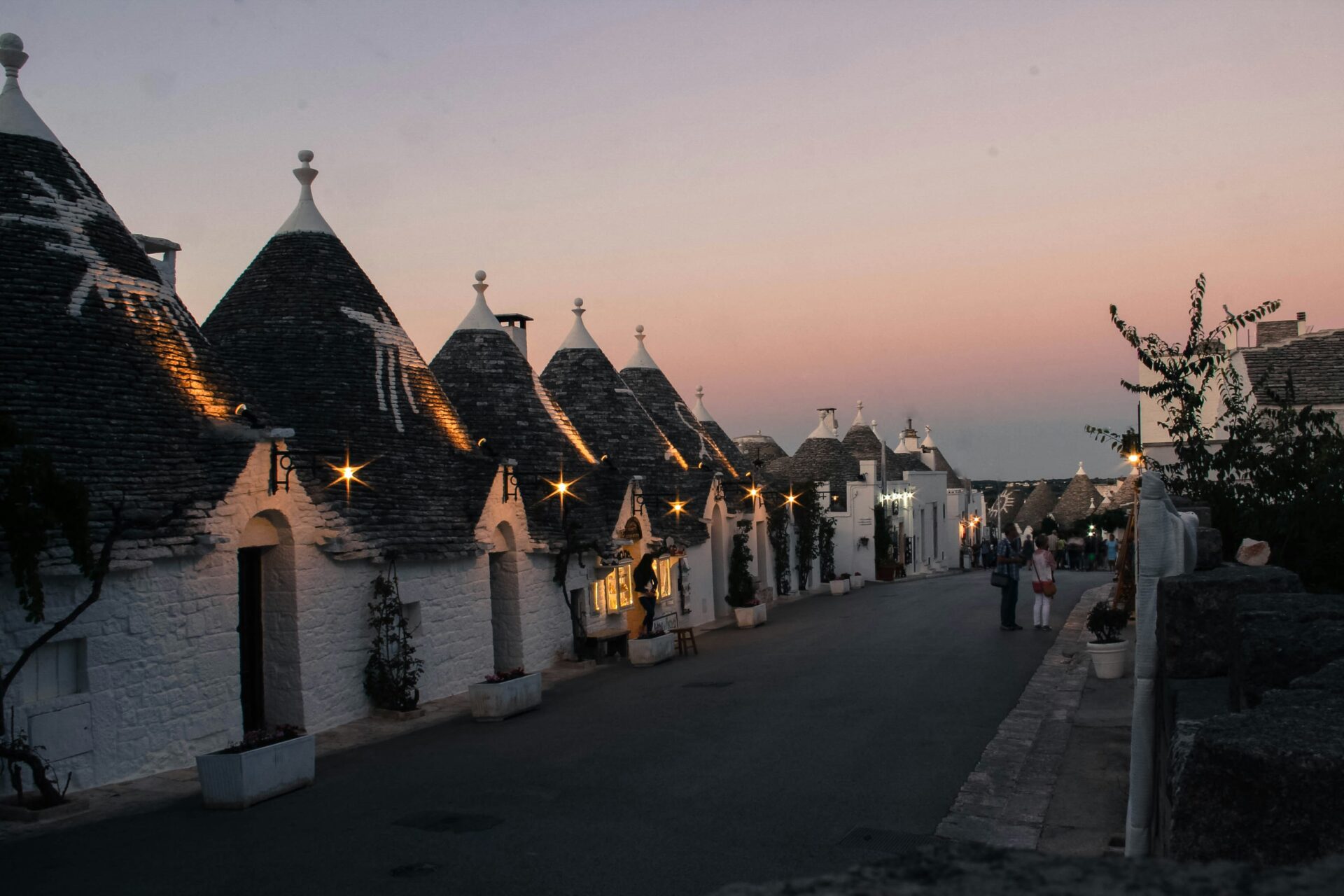
Regional Cuisine and Local Specialties
The food here bursts with tradition. I can still taste orecchiette pasta, covered in tomato sauce and fresh basil, eaten in a shady trullo courtyard.
Local cooks stick to recipes their families have used for ages. They grab ingredients from nearby fields or straight out of the Adriatic Sea.
A few highlights include:
- Orecchiette with turnip tops
- Focaccia Barese drizzled with extra virgin olive oil
- Handmade cheeses like burrata
- Limoncello and local wines, such as Primitivo
People usually associate balsamic vinegar with northern Italy, especially Modena, but I actually found it in some Puglian salads or drizzled over cheese. You might stumble across other Italian treasures too—Murano glass from Venice sometimes pops up in fancy trulli or sits in artisan shops.
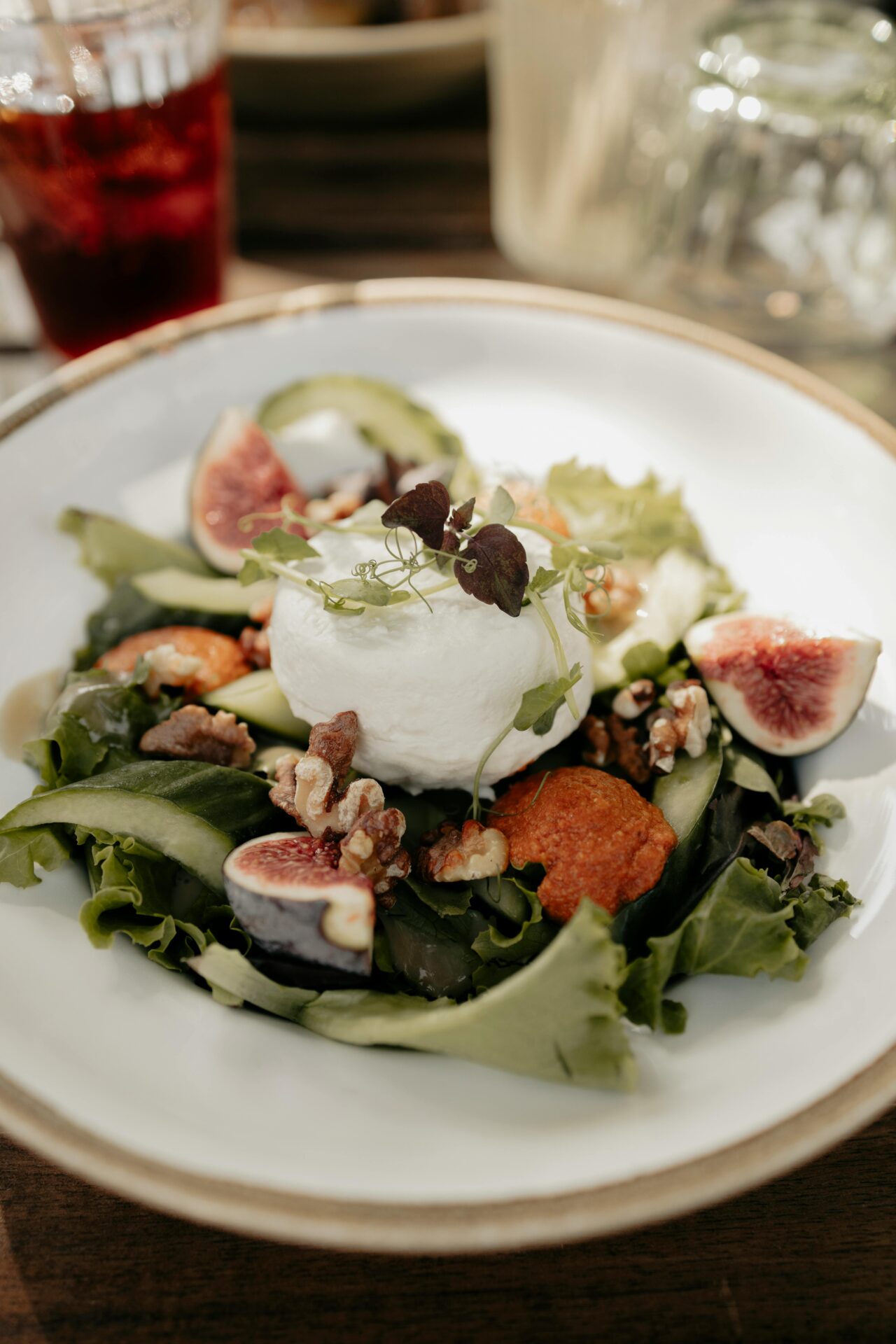
Cultural Events and Festivals Near Trulli
The trulli region really comes alive during festival season. Last summer, I joined the Festa dei Trulli in Alberobello. Locals packed the main square for concerts, dancing, and open-air tastings.
Nearby small towns throw food fairs to celebrate olive oil, cheeses, and seasonal produce. I spotted street performers, traditional music groups, and the occasional parade.
Markets overflow with fresh produce and crafts. Sometimes you’ll find Murano glass jewelry or hand-painted ceramics tucked among the stalls.
If you visit during a festival, you’ll get more than just sightseeing. You actually feel the community, and that connection to local culture is hard to beat. Just a heads up—book early, because these events make the trulli region a magnet for travelers.

